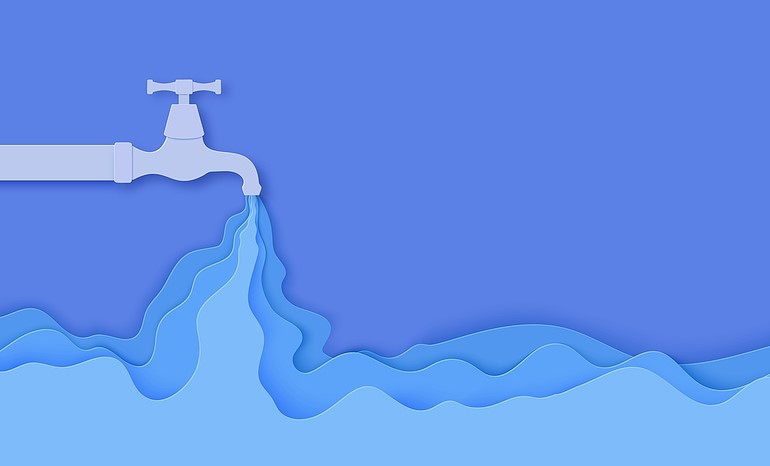News
What Is Water Transfer?
To consider the benefits of water transfer as a concept, we must first consider the issue of inequalities in water distribution around the world, something that makes water transfer and interconnection a vital part of modern-day resource management… particularly now, in the face of climate change and ever-increasing extreme weather events.
Because over 70 per cent of the earth’s surface is actually water, it’s very easy to think that we all have plentiful resources in abundance… but this actually couldn’t be further from the truth and, in fact, only around three per cent of all the earth’s water is fresh – and two-thirds of this is trapped in glaciers or otherwise unavailable for use.
Currently, water stress and scarcity affects more than 40 per cent of the world’s population and, as such, it’s essential that a range of different solutions are found to address the problem, which differs from region to region, with each part of the world facing their own unique set of pressures where water is concerned.
Unequal distribution of water resources around the world is most certainly a big part of the issue of water scarcity, with some regions suffering from regular and acute water shortages while others have plentiful access. And others still may find they suddenly have too much water, as has just been seen in Pakistan with intense flooding devastating much of the country.
It’s expected that the uneven distribution of water availability globally will increase as time goes on, in line with current climate change projections… and this is where water transfer may prove to be a particularly effective solution, helping to improve access to water resources.
Water transfers explained
Water transfers involve the large-scale physical transfer of resources from one place to another, often involving the use of dams, reservoirs, canals and pipes to move water from one donor basin to a second recipient basin.
Transfers can be carried out across a single region or within a single country, but they can also be extended from continent to continent, which could prove vital and potentially even life-saving in the future.
Of course, transferring water on such a big scale from one place to another has a range of different socio-economic and environmental impacts. Those living in or around the donor basin could start to experience issues with their own water supply, for example, with less available for agriculture.
The process can also affect the local biodiversity in the area surrounding the recipient basin, with different types of water being mixed and even the potential introduction of invasive species, which could cause problems for local ecosystems.
And river systems can be interrupted by moving huge swathes of water around and about, while fish migration and spawning patterns can also be disrupted.
Case study 1: Thames Water & Lake Vyrnwy
Work is already underway to transfer water from Wales to parts of England badly affected by drought, according to Sir John Armitt, chair of the National Infrastructure Commission, explaining that reservoirs are unpopular because land has to be flooded during construction and water companies are reluctant to invest in such infrastructure.
Sir John confirmed to Radio 4’s The Briefing Room that Thames Water and Severn Trent were already in talks to move water from Lake Vyrnwy in Wales to the south of England, transferred either via a canal or through pipes to the Thames basin.
He went on to say: “Of course one of the biggest in Wales is Lake Vyrnwy, which would be the potential source in a water transfer scheme.
“Essentially, you are transferring water from one river basin to another so you’d be transferring it from Wales. And work has already started on this between Severn Trent and Thames Water.
“So Severn Trent controls Lake Vyrnwy in mid-Wales. And Thames [Water] controls the Thames basin and the plan that they have is to shift water. It could be as much as three to 500 million litres a day between those two catchment areas when you do it through a series of pipework or you could do it through the canal system.”
Case study 2: Kielder Water Scheme
Demand for water increased exponentially in the north-east of England in the mid 19th century, thanks to expanding industries on Tyneside and Teesside.
Despite the fact that reservoirs were constructed, demand soon started to outstrip supply – so the Kielder scheme was implemented, a regional water transfer scheme that involves the release of water from the Kielder Water reservoir into local rivers.
This system means that rivers like the Tees, Derwent and Tyne can be maintained at minimum levels, even in the face of low levels of rainfall. This means that there are more resources available for domestic and industrial use further downstream.
It was planned in the late 1960s to ensure that an expected rise in demand for water was catered for, following a boom in the industrial economy. This boom never quite came to fruition, but the Kielder Water system still continues to serve the north-east of the country.
Kielder Water itself is a 200 billion litre reservoir and the biggest artificial lake in the UK, nestled in Kielder Forest, which is the biggest manmade woodland to be found in Europe.
It is also home to the biggest hydroelectric plant in Europe, with a dual-turbine power station that generates an average 20,000MW of electricity annually.
This particular project has succeeded in reducing water shortages in the north-east, with rivers flowing in places like Sunderland and Middlesbrough at higher levels than before the scheme was brought in.
Do you want to find out why water efficiency is important? Get in touch with us here at H2o Building Services today.
